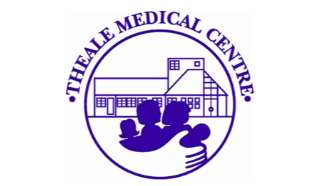Having A Blood Test
A Patient Guide To Having a Blood Test
The process of taking blood is called venesection or phlebotomy, which involves taking a blood sample from a vein. The information given below outlines the procedure in more detail and answers some frequently asked questions.
Our blood clinic
In order to provide maximum capacity appointments in our blood taking clinic are booked every 5 minutes. Due to the speed of this clinic, we request that patients arrive five minutes before their appointment time. If late for their appointment patients will usually be asked to re-book.
Is there anything I should do before attending my appointment?
It is easier to take blood when a person is well hydrated, we therefore ask patients to drink 3 glasses of water (even if fasting) in the hour before their appointment. We also suggest that when waiting to be called through by the phlebotomist (blood taker) that patients keep their arms warm, as this dilates the veins (makes them larger) and helps the blood taking process.
How is a blood sample taken?
The procedure is performed by a trained phlebotomist, doctor or nurse. A tourniquet (an elasticated band) is placed around the arm, just above the elbow. A small needle is inserted into a vein, usually located in the inner elbow. However, occasionally the best vein is found at the wrist or the back of the hand. Blood is collected into sample bottles, before the needle is removed. Pressure is then applied at the site with a piece of cotton wool until the bleeding has stopped. The cotton ball is then secured with tape.
What if the phlebotomist, doctor or nurse is unable to take any blood?
If they are unsuccessful after two attempts the patient be will requested to attend the Royal Berkshire Hospital (walk-in service) or West Berkshire community Hospital (appointment only) phlebotomy service.
Will having my blood taken hurt?
Putting the needle into the arm involves a pin prick sensation and therefore can be uncomfortable, but after this the procedure should be more comfortable. Occasionally, people can continue to feel some discomfort or pain, this is thought to be due to nerves under the surface of the skin and settles by itself.
Will I bruise?
It is possible that patients will develop a bruise or a small lump after having their blood taken. The bruise can sometimes be large, appear away from the exact site the blood was taken from and can persist for a week or so. This can cause concern, but will resolve with time and requires no treatment.
Some circumstances can increase the risk of bruising. For example, medication (such as warfarin and aspirin), bleeding disorders/low platelets, difficulty finding a vein and in elderly patients. Patients should tell the blood taker if they have any of these conditions or if they have experienced problems in the past.
To reduce the risk of bruising, patients are asked to press firmly on the site until the bleeding has stopped, to keep the arm slightly raised and avoid too much movement of the arm (such as lifting) for an hour afterward. Ice cubes, wrapped in a towel, applied to the area, can help reduce swelling and bruising if necessary.
What if I feel faint?
Occasionally having blood taken makes people feel faint. If feeling faint, patients should inform a member of staff immediately. A nurse or doctor will be informed and will attend to the patient as required.
How will I find out my results?
Your results will usually be available after five working days. You can use our website ‘ ask a question and we will respond to you with regard to your results. Alternatively, you can call the surgery week days after 2pm.



